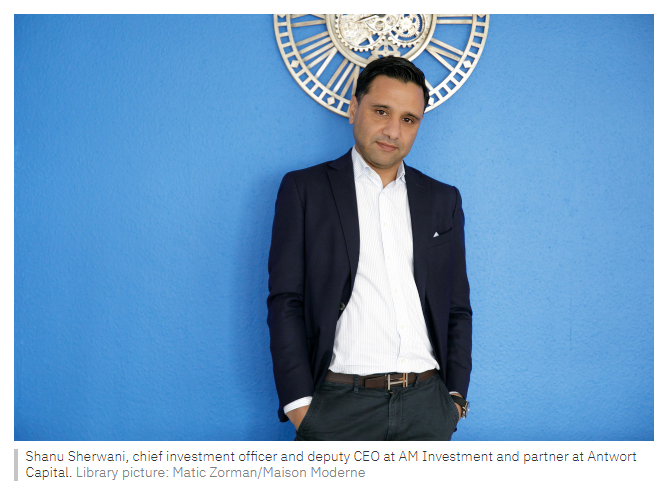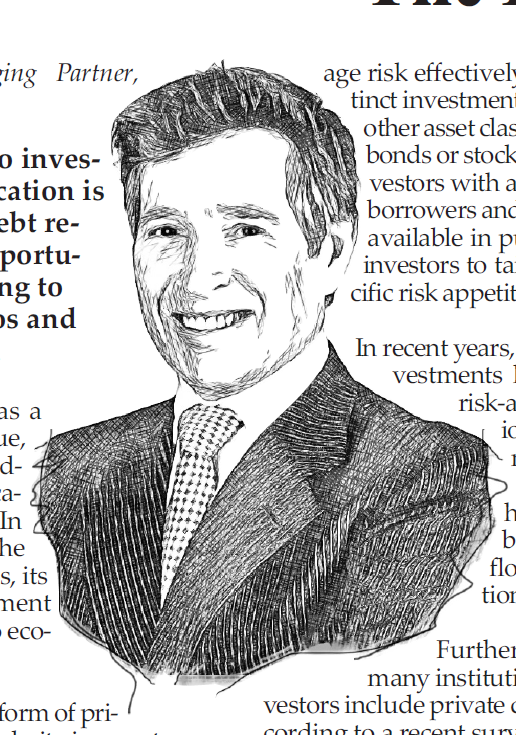By Shanu Sherwani, DELANO (Luxembourg) January 2024
Declining deal values and exits in 2023 will lead to fundraising challenges in 2024, according to Shanu Sherwani of AM Investment Management and Antwort Capital.
In this article, I analyze the private equity market in 2023, focusing on key trends, outlook and forecasts for 2024. Notably, deal values fell by around 45% in the middle of the year 2023, while releases saw a 70% drop. This situation has increased fundraising challenges, which could lead to a 30% decline by the end of 2023.
Since June 2022, uncertainty has surrounded the prospect of an impending recession, leading to questions about when the private equity market will regain momentum. Despite the rapid increase in interest rates, it is worth noting that the federal funds rate is currently at levels similar to those seen in 2006 and 2007, the two most active years in terms of transactions in the sector until ‘in 2021. Therefore, interest rates are expected to be a manageable barrier to completing transactions.
Despite higher-than-usual inflation, corporate profits remain strong across many sectors, with some even posting strong performances. There are no clear indicators of a failing banking system or massive asset bubbles like those seen during the Great Recession of 2009, which would require large-scale corrective measures over a prolonged period. Therefore, the current market does not have fundamental flaws.
The crucial question is when trading will resume and what is causing the delay. A significant challenge for the sector’s recovery is to inject more capital into the pockets of limited partners. To revitalize the sector, it is essential to channel money into exits and other liquidity solutions, in order to strengthen the confidence of limited partners for future investments. There are a significant number of portfolio companies awaiting exit, requiring liquidity for transactions.
Difficulties in concluding investment agreements
Investments are facing challenges, especially in financing large transactions, due to the increasing cost of loans and strict standards imposed by lenders, especially banks. On a positive note, private credit has grown in importance in the middle market, helping to finance larger transactions and demonstrating the financial sector’s ability to adapt. However, ongoing market uncertainty has led to a persistent gap between buyers’ and sellers’ price expectations, raising questions about how long it will last.
Top Investing Trends
In 2023, the overall annualized deal value fell 45% from the previous year, and the number of deals fell 40%. An important strategy in the buyout market has been the use of bolt-on acquisitions, accounting for 11% of the total deal value and 60% of the total number of deals. These add-on acquisitions typically involve smaller acquisitions integrated into larger platforms.
In the United States, average purchase price multiples remained high, around 12.5 times Ebitda, according to the latest data for the first quarter of 2023. In contrast, European multiples tended to fall, with the lowest data most recent results from the first quarter indicating a multiple of around 10 times Ebitda. This significant difference between the US and European markets is unusual. It can be attributed to a variety of factors, including fluctuations in U.S. profits, GDP movements, a technical recession in Germany, and the broader economic landscape in Europe. There is a substantial disparity between the prices of US profits and those of European profits.
Global Dry Powder Perspective
Global dry powder in private asset class strategies was steady at around $3.7 trillion in 2023, with $1.1 trillion allocated to corporate buyouts. About 75% of this allocation to buyouts is considered “fresh powder,” meaning the investment period is less than three years, providing ample time to effectively deploy the funds. In the context of buyouts, the current level of dry powder represents approximately three to four years of typical investments based on the average deal value over the past five to seven years.
Looking back over the past two decades, the dry powder to activity ratio is within the normal range. Therefore, concerns about excessive dry powder in the buyout industry do not appear to be justified at this time.
Exit challenges and strategies
During the first half of 2023, the focus has been on exits rather than investments in the financial landscape. All exit routes saw a significant decline during this period, particularly exits financed by corporate buyouts, which fell by 67%, marking a drastic two-thirds drop from the previous year. The total number of exits also fell by 40%, underscoring the seriousness of the situation. The main problem is the huge backlog of exits, which affects more than 26,000 companies owned by buyout funds and whose total value is estimated at around $2.7 billion. Worryingly, a quarter of these companies remained under the management of general partners for six years or more.
General partners urgently need to develop a strategy to unlock the potential of these $2.7 trillion in assets, which involves reassessing initial values and finding ways to maximize profits while ensuring acceptable returns. The urgency comes as limited partner cash flow has turned negative in 2022, following a positive trend in 2021. Negative cash flow has persisted over the past five years as capital calls have exceeded distributions, which has raised concerns about their duration and scale.
To address these liquidity issues, general partners are exploring options other than full exits or traditional sales. These include secondary market solutions such as continuation vehicles, strip portfolio sales and equity loans. These innovative approaches aim to inject necessary liquidity into the pockets of sponsors. Therefore, general partners are inclined to explore these alternative options to ease their cash flow constraints.
Fundraising Challenges
The current state of fundraising in the private capital industry reveals significant challenges. The lack of investment opportunities and exits has hampered the ability of general partners to secure new financing. Sponsors also faced financial pressures despite the absence of a full-blown recession. Global private capital raised by mid-2023 fell 30%, with a 45% drop in funds successfully closing deals compared to 2022. The dry powder issue exacerbates the situation, as many companies have raised significant funds quickly, which exacerbated cash flow problems. Limited partners must manage $1.1 trillion repayable by general partners for redemptions, creating a total exposure of $3.7 trillion across private asset classes.
Additionally, competition for limited partner capital has intensified, with 14,000 private capital funds seeking $3.2 trillion, while $3.7 trillion of dry powder remains available. For every dollar that is raised, three dollars will be sought. This imbalance between supply and demand has not been seen since the global financial crisis of 2009, making raising capital extremely difficult.
A return to substantial trading is essential to meeting this challenge, enabling liquidity and liquidation of 26,000 holding companies. This would put capital back into the pockets of private investors and revive fundraising, allowing the sector to continue its growth trajectory.
Outlook for 2024
After a turbulent 2023, during which many transactions were interrupted, business buyout leaders do not foresee an immediate revival of activity at the dawn of 2024. However, the prospect of a drop in rates of interest and the reduction in valuation gaps allow us to be optimistic about a potential recovery.
There is a significant gap between the needs of businesses and the state of capital markets. Despite a sudden drop in liquidity, several sectors still need investment and growth, including quality companies, subsector consolidation, technological advancements, environmental protection and the energy transition. Private capital remains essential and 2024 is an opportune time for well-capitalized, flexible, long-term investors. Capital markets are currently not meeting the needs of businesses, and it may take some time for the liquidity shortage to resolve.
Many anticipate an increase in transactions over the next six months, particularly in the area of earnouts, secondary buyouts, technology investments and distressed asset restructurings. This situation contrasts with the year 2023, which saw two distinct halves in private equity activity. The first half of the year was marked by limited and moderate private equity transactions and exits due to the stagnation of the IPO market. However, the second half saw an increasing number of secondary transactions, carve-outs and private-to-private transactions, culminating in a robust fourth quarter, marking the highest value of new acquisitions since the private equity downturn in 2022 This trend sets a positive tone for buy-side activity in 2024.
When it comes to outflows, more companies may seek liquidity opportunistically, building on the focus on alternative liquidity routes seen in the previous year. This includes increased reliance on secondary sales and continuation funds, a major prediction for 2024.
In addition, 2023 saw the emergence of private credit, which financed more than 80% of private equity transactions. These financial market players have significant dry powder and are poised to continue expanding their influence throughout 2024.
Barring unforeseen shocks and adverse developments, 2024 is expected to be a year characterized by a steady increase in market activity and growth in the private equity sector.
Shanu Sherwani is Chief Investment Officer and Deputy Managing Director of AM Investment Management and Partner of Antwort Capital.
This article comes from the Delano Finance newsletter, the weekly meeting to follow financial news in Luxembourg, in English and French.






